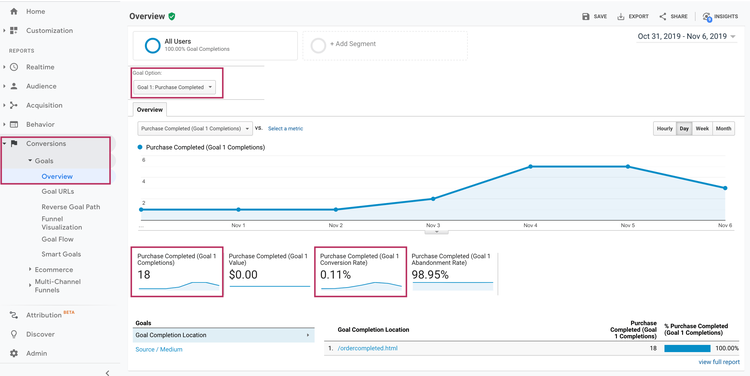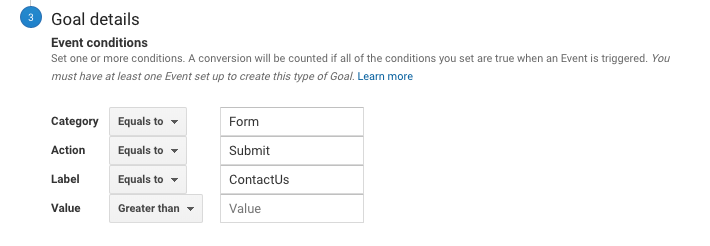What Data Is Google Analytics Goals Unable to Track: A Total Overview
What Data Is Google Analytics Goals Unable to Track: A Total Overview
Blog Article
Discover the Limitations of Google Analytics Goals: Unveiling the Information Types That Remain Untrackable
As services significantly rely upon data-driven decision-making, comprehending the constraints of devices like Google Analytics comes to be extremely important. While Google Analytics Goals deal valuable insights into user interactions, there exist data kinds that avoid tracking, positioning difficulties to a comprehensive understanding of customer actions. These untrackable data kinds increase inquiries about the accuracy and efficiency of the analytics data that companies heavily rely upon for their electronic methods. Curious to reveal the concealed unseen areas in your information evaluation process?
Incomplete User Journey Tracking
Incomplete user journey monitoring within Google Analytics can hinder the ability to properly analyze individual behavior. When the individual trip is not completely tracked, there are voids in the information that protect against a thorough understanding of how individuals communicate with a website. This absence of insight can lead to missed opportunities for optimization and improvements to the customer experience.
One usual issue with insufficient user journey monitoring is the inability to see the full path that users take previously finishing a goal or leaving the website. Without this details, it is challenging to identify where customers may be experiencing barriers or friction factors that avoid them from transforming. Furthermore, incomplete tracking can obscure the influence of certain advertising and marketing initiatives or site adjustments on individual actions.
To address this constraint, it is important to establish proper monitoring systems within Google Analytics to capture the entire individual trip. This may entail establishing event monitoring, goal funnels, or using tools like Google Tag Supervisor to guarantee that no vital communications go unrecorded. By acquiring a comprehensive view of the individual journey, web site proprietors can make even more enlightened decisions to boost user engagement and drive conversions.
Acknowledgment Obstacles
Browsing via attribution challenges in Google Analytics needs a comprehensive understanding of exactly how various touchpoints add to the general conversion procedure. Acknowledgment obstacles arise from the intricacy of contemporary customer journeys, where users engage with multiple channels prior to transforming.
One usual attribution challenge is the problem in attributing conversions to the proper resource, particularly in instances where individuals communicate with numerous networks prior to transforming. In addition, cross-device tracking postures another attribution difficulty, as individuals often switch over between tools during their trip, making it testing to track their communications effortlessly.
Offline Conversions
Offered the challenges linked with associating conversions properly in online channels, the measurement of offline conversions provides a significant chance for marketing professionals looking for a much more thorough understanding of their consumers' journey. Offline conversions refer to actions that consumers take in the real world, such as making purchases in brick-and-mortar stores or over the phone, going to occasions, or involving with published materials - what data is google analytics goals unable to track. These conversions are vital for services that run both online and offline, as they provide useful understandings right into the performance of marketing projects across different touchpoints
Tracking offline conversions commonly posed a substantial difficulty for online marketers, as it was testing to link these actions back to specific on the internet communications precisely. With improvements in modern technology, such as the assimilation of CRM systems, one-of-a-kind identifiers, and voucher codes, companies can now connect the space between online and offline data to get a more all natural view of client behavior. click now By efficiently gauging offline conversions, marketers can enhance their techniques, allot sources a lot more effectively, and inevitably enhance the general client experience.
Cross-Device Monitoring
Cross-device tracking plays a crucial role in recognizing the interconnected nature of consumers' electronic communications across multiple gadgets. In today's omnichannel globe, where individuals perfectly switch over in between desktops, smart devices, and tablet computers, tracking their behavior throughout these devices is essential for marketing experts to acquire a detailed view of their consumer trip.

In addition, personal privacy worries and laws such as GDPR and CCPA have further complicated cross-device monitoring. With individuals requiring even more control over their information and enhanced restrictions on tracking technologies, online marketers need to discover ingenious and privacy-compliant methods to connect individual communications across devices.
Dynamic Content Involvement
Recognizing individual engagement with vibrant web content is pivotal in optimizing electronic marketing approaches for improved target market communication. Dynamic material refers to internet site aspects that alter based upon customer habits, preferences, or various other factors, supplying an individualized experience. Tracking individual communications with vibrant content postures difficulties for conventional analytics devices like Google Analytics.
While Google Analytics can track fundamental interactions like clicks and web page views, it might battle to record even more nuanced engagements within vibrant content. what data is google analytics goals unable web to track. Metrics such as Get the facts time invested on particular vibrant components, float actions, or communications within pop-ups are frequently not easily quantifiable making use of basic monitoring techniques. This restriction prevents online marketers' capacity to fully realize just how users are engaging with vibrant material and customize their approaches appropriately

Verdict
To conclude, Google Analytics goals have limitations in tracking incomplete individual journeys, connecting conversions accurately, recording offline conversions, tracking cross-device interactions, and determining vibrant material engagement. These restraints highlight the value of discovering additional monitoring techniques and tools to obtain an extra thorough understanding of user habits and conversions past what Google Analytics can provide.
While Google Analytics Goals deal valuable insights into customer interactions, there exist information types that thwart tracking, presenting challenges to a comprehensive understanding of user habits.Insufficient individual journey monitoring within Google Analytics can hinder the ability to precisely evaluate user habits. When the user journey is not fully tracked, there are gaps in the information that prevent a thorough understanding of just how customers connect with a website.One common concern with insufficient individual journey tracking is the inability to see the complete course that customers take in the past completing a goal or leaving the site. By obtaining an extensive sight of the individual trip, web site proprietors can make more informed choices to improve individual interaction and drive conversions.
Report this page